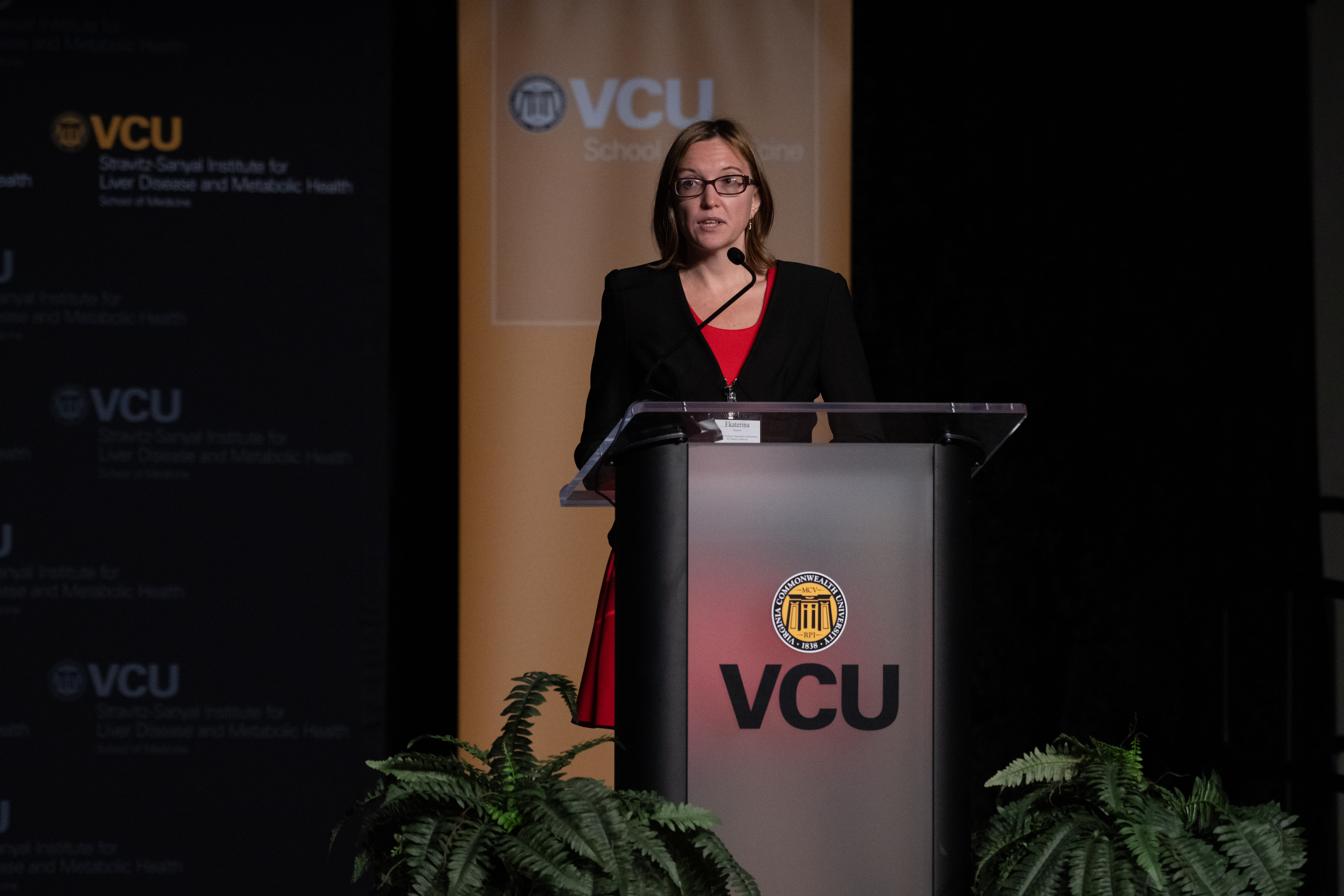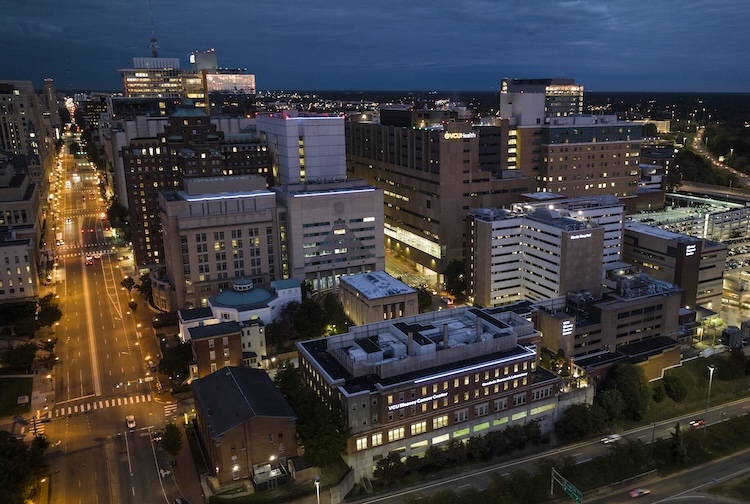VCU researchers provide new insights for combating fatty liver disease at inaugural symposium
From sex-specific differences in liver inflammation to genetic solutions for curing liver cancer, here are some of the ways that VCU researchers are working to better understand nonalcoholic fatty liver disease and related illnesses.
December 09, 2022 A 3D illustration of Liver damage such as fatty liver, fibrosis, cirrhosis, and liver cancer. (Getty Images)
A 3D illustration of Liver damage such as fatty liver, fibrosis, cirrhosis, and liver cancer. (Getty Images)
By Olivia Trani
About one-quarter of the global population is living with one of the most common forms of liver disease in the world. Nonalcoholic fatty liver disease (NAFLD) occurs when excessive fat builds up in the liver, most often found in people who are obese or have high blood pressure, diabetes or high cholesterol. Over time, the illness can become debilitating.
Some people with NAFLD can develop nonalcoholic steatohepatitis (NASH), an aggressive form of liver disease in which inflammation causes liver damage and scarring. In severe situations, individuals can become at risk for liver failure and liver cancer.
NAFLD was one of the issues leading experts shared insights into during the Stravitz-Sanyal Institute for Liver Disease and Metabolic Health's Inaugural Academic Symposium.
Over the course of two days in October, medical professionals and academics discussed the progress and future of liver-related research, including insights into preventing and treating NAFLD. Here are some of the ways researchers are furthering our understanding of NAFLD and its related illnesses.
Biological clues into how men and women differ in chronic liver disease progression with age
As our bodies age, we tend to experience more inflammation in several of our organs, including the liver, making aging a major risk factor for liver disease. Past studies have shown that men are more likely to develop NAFLD and liver cancer than women, however, it is not well known how sex-based differences play a role in aging-related liver inflammation.
As part of a recent study, published in Cell Reports, a research team led by the VCU School of Medicine and VCU Massey Cancer Center examined biological differences in male and female mice to better understand how liver inflammation progresses during aging.
They found that, when given a normal diet, female livers were on average more effective than male livers at regulating liver inflammation as they aged. The experiments also reported that livers in female mice showed a balanced mix of inflammatory and anti-inflammatory immune cells during aging, while livers in male mice were dominated by inflammatory immune cells.
“The ability of female mice to maintain this balanced pattern of immune cells in the liver could explain their lower susceptibility to NALFD,” said Madison Isbell, a data analyst and research technician at the VCU School of Medicine.
The research team was led by Masoud Manjili, D.V.M., Ph.D., a professor at the VCU School of Medicine's Departments of Pathology and Microbiology & Immunology, and Arun Sanyal, M.D., director of the Stravitz-Sanyal Institute for Liver Disease and Metabolic Health. They both are also Massey researchers.
How gut bacteria impact liver disease progression
Our digestive tracks are home to up to 1,000 different species of bacteria and other microorganisms. Most of these microbes are integral for our health, such as helping our bodies digest certain foods and supporting our immune system, but some have been shown to help promote disease. A recent study led by VCU School of Medicine and the National University of Singapore is shedding new light on how some gut bacteria play a role in progressing NAFLD through interactions with bile acids.
Formed in the liver, bile acids help make fat molecules more easily digestible. Some bile acids, known as secondary bile acids, undergo modifications when they encounter certain gut bacteria in the colon.
“Because bile acids carry out important biological activities relevant to NAFLD, we wanted to better understand how interactions between bile acids and gut microbiota influence this disease in patients,” said Ekaterina Smirnova, Ph.D., an assistant professor at VCU School of Medicine's Department of Biostatistics, who co-led the study.
By analyzing fecal samples and other biological data from patients with NAFLD, Smirnova and her colleagues revealed that one particular secondary bile acid, called deoxycholic acid (DCA), was more prominent in patients with more severe symptoms and less prominent in patients with improved liver health following treatment. The findings suggest health care providers can potentially use DCA molecules to detect and monitor the disease.
The researchers also found that certain DCA-producing bacterial groups, including Bacteroides and Lachnospira, were more abundant in patients with advanced liver disease. Furthermore, they discovered several potentially beneficial bacteria that are sensitive to DCA molecules were less abundant. The results, published in Hepatology, show there could be therapeutic possibilities for inhibiting NAFLD progression by targeting specific bacterial groups.
Genetic solutions for treating liver disease and cancer

When nonalcoholic steatohepatitis (NASH), a more advanced form of NAFLD, continues to develop in a patient, the disease can ultimately lead to liver cancer. The cause of this progression was a mystery until 2008, when Devanand Sarkar, Ph.D., and his colleagues at Columbia University uncovered a gene known as AEG-1.
Since this initial discovery, Sarkar moved to VCU School of Medicine's Department of Human and Molecular Genetics and became the associate director for training and education at the VCU Massey Cancer Center. His research has revealed that AEG-1 plays a critical role in this transformation by promoting fat accumulation, inflammation, and tumor development.
Researchers at VCU and the University of Iowa, along with Sarkar, have recently developed a lipid-based nanoparticle that, once intravenously injected, could transport drugs directly to the liver without impacting other organs. The nanoparticles work by binding to the surface of liver cells, delivering small RNA molecules that interfere and can make the AEG-1 gene inactive. Through preclinical studies, the researchers have shown that the strategy can help ward
off NASH and liver cancer, suggesting that such a therapy could potentially give patients a better chance of beating the disease.
“One of the goals of the institute is gene therapy, and this is one field I have been working on for more than 20 years, using different strategies of genetic modulation as treatment, especially for cancer,” Sarkar said.





